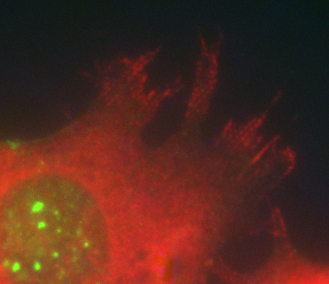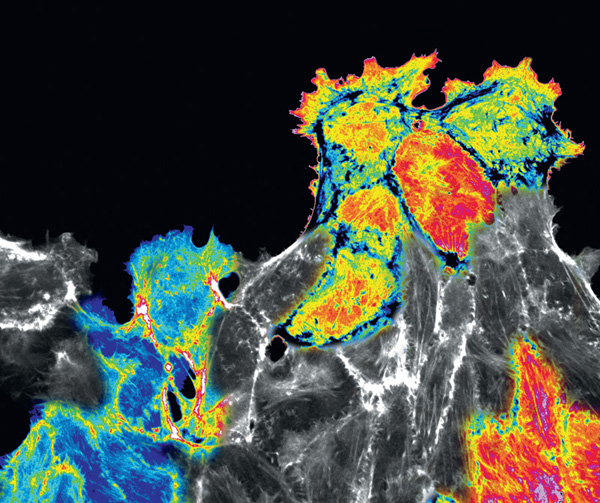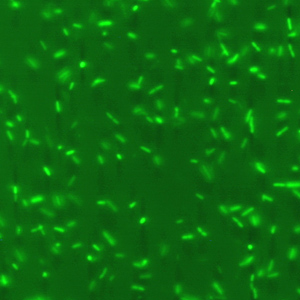Research news
A breakthrough in understanding age-related disease
 Researchers at IBEC have made an important leap towards understanding the second most common neurodegenerative illness, Parkinson’s disease (PD), which affects around 5% of the population by age 85.
Researchers at IBEC have made an important leap towards understanding the second most common neurodegenerative illness, Parkinson’s disease (PD), which affects around 5% of the population by age 85.
Previously, it wasn’t clear whether induced pluripotent stem cells (iPSCs) – adult cells genetically reprogrammed to an embryonic stem cell-like state, which offer an unrivalled opportunity to understand many human diseases – were able to shed any light on illnesses which are age-related.
Developing a new solution to treat atherosclerosis
 We’ve all eaten rich meals or fatty foods and joked that we can feel our ‘arteries hardening’. However, the reality of atherosclerosis – when fat, cholesterol, and other substances build up in the artery walls and form solid structures called plaques – is no joking matter. The consequences of this disorder can include stroke and coronary artery disease, the leading cause of death in many developed countries.
We’ve all eaten rich meals or fatty foods and joked that we can feel our ‘arteries hardening’. However, the reality of atherosclerosis – when fat, cholesterol, and other substances build up in the artery walls and form solid structures called plaques – is no joking matter. The consequences of this disorder can include stroke and coronary artery disease, the leading cause of death in many developed countries.
Now, a new scientific project involving IBEC and three other European research centres is set to offer a novel, minimally-invasive treatment for atherosclerosis patients, thanks to funding awarded by the European Commission.
Shedding light on misbehaving cells
Much like a kindergarten full of unruly toddlers, the cells that contribute to the body’s crucial processes can’t always be trusted to do what you want or expect them to do. Now IBEC researchers have made an important breakthrough that could contribute to the development of therapies for spinal and neural diseases: they’ve figured out exactly what it is that makes certain cells misbehave in particular circumstances.
IBEC Picture Release: “The dance of the cells: a minuet or a mosh?”
 This image, which features on the November cover of the high-impact journal Trends in Cell Biology, illustrates work by researchers from Barcelona’s Institute for Bioengineering of Catalonia (IBEC), who collaborated with Harvard investigators earlier this year to come up with a brand new concept in biology, plithotaxis.
This image, which features on the November cover of the high-impact journal Trends in Cell Biology, illustrates work by researchers from Barcelona’s Institute for Bioengineering of Catalonia (IBEC), who collaborated with Harvard investigators earlier this year to come up with a brand new concept in biology, plithotaxis.
Researchers shed new light on predicting spinal disc degeneration
 The misery of lower back pain is, unfortunately, all too familiar to many people. Now researchers have taken a big step towards understanding one of the most common and debilitating complaints in the industrialized world, with results that could help to predict the onset of disc degeneration.
The misery of lower back pain is, unfortunately, all too familiar to many people. Now researchers have taken a big step towards understanding one of the most common and debilitating complaints in the industrialized world, with results that could help to predict the onset of disc degeneration.
Back pain is closely related to ageing of the discs in the spine, a process characterized by a series of changes in their structure and function, but until now the chain of events that converts normal disc ageing into degenerative disease has not been properly understood.
Identifying an essential interaction for epilepsy
Scientists at the Institute for Bioengineering of Catalonia (IBEC) describe a major step towards the understanding of epilepsy in a paper published in Molecular Biology of the Cell.
In the study, the researchers shed new light on the importance of a neuronal protein known as PrPc, which performs a number of physiological functions in many neural processes. When mutated or misfolded, the pathogenic form of the protein, PrPsc, induces progressive conditions that affect the brain and nervous system, such as Creutzfeldt-Jakob disease and BSE, while in epilepsy it appears that the healthy protein plays a preventative role.
Plithotaxis: how crowds of cells find their way
First measurements of forces driving collective cell migration unveil new principle in biology
Processes like tissue regeneration and cancer metastasis rely on groups of cells moving long distances without losing their cohesiveness, but how they do this has remained unknown. Now researchers from the Institute for Bioengineering of Catalonia (IBEC) and Harvard University have solved the mystery and unveiled a brand new phenomenon in biology.
Opening new doors to combat bacterial infections
 We may be several steps closer to understanding one of the major pathologies that affects sufferers of cystic fibrosis, thanks to Senior researcher Eduard Torrents of IBEC’s Microbial biotechnology and host-pathogen interaction group.
We may be several steps closer to understanding one of the major pathologies that affects sufferers of cystic fibrosis, thanks to Senior researcher Eduard Torrents of IBEC’s Microbial biotechnology and host-pathogen interaction group.
In a study published this week in the American Society for Microbiology’s journal Infection and Immunity, Eduard and his collaborator in Stockholm, Britt-Marie Sjöberg, looked at DNA synthesis in Pseudomonas aeruginosa, a bacterial infection that is a frequent complication in many people with cystic fibrosis, and a common cause of death in those patients.
Smelling by minispectrometer provides fast determination of wine origin
 Wine fraud is a growing problem, with experts estimating that up to 10% of the wines offered to consumers in some European countries are of a lesser quality than the label claims.
Wine fraud is a growing problem, with experts estimating that up to 10% of the wines offered to consumers in some European countries are of a lesser quality than the label claims.
It’s an issue that affects everyone from expert collectors to average consumers, and is such a concern in some countries that drastic measures have been taken: the Italian Carabinieri Corps, for instance, has educated 25 of their officers as sommeliers.





